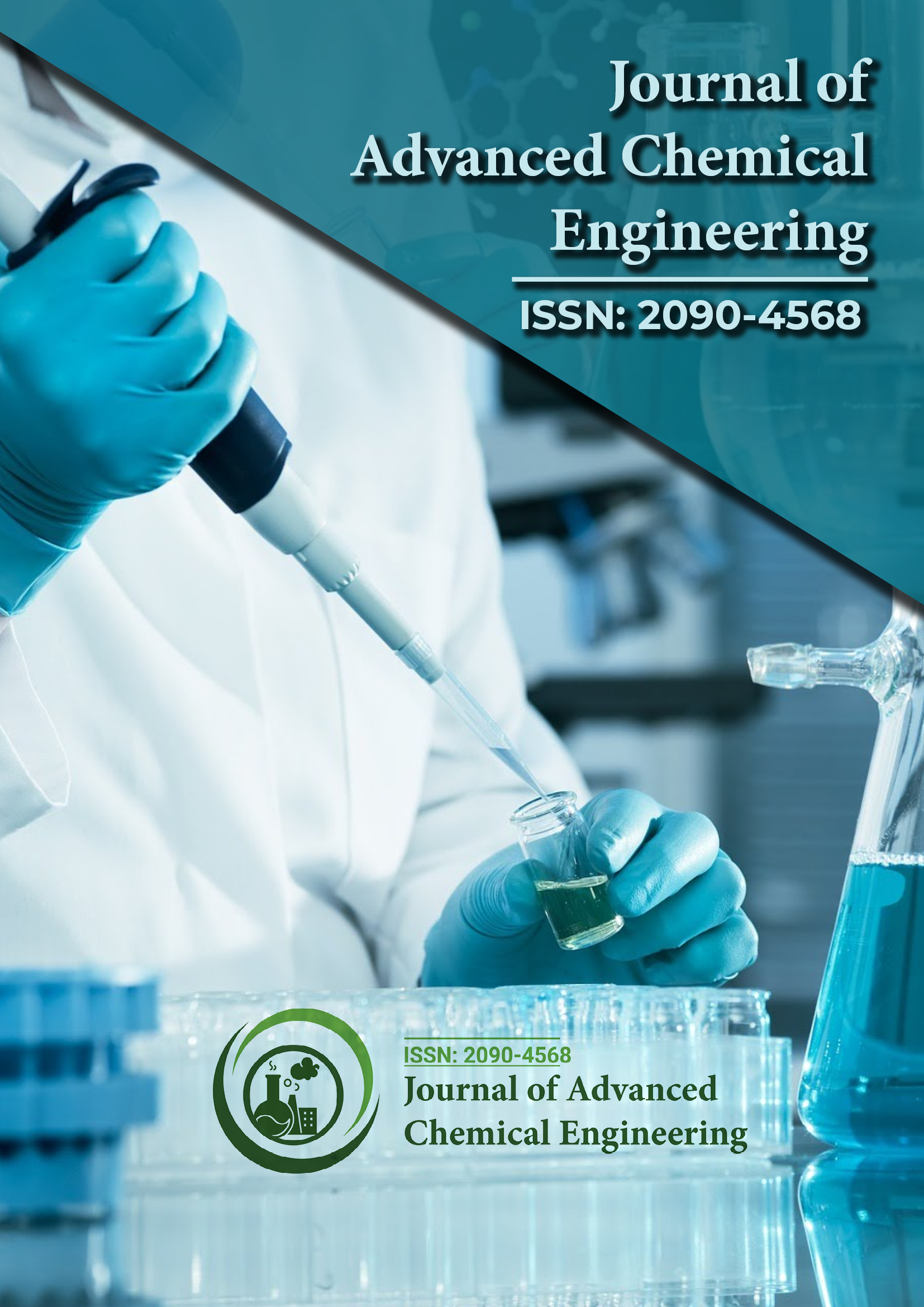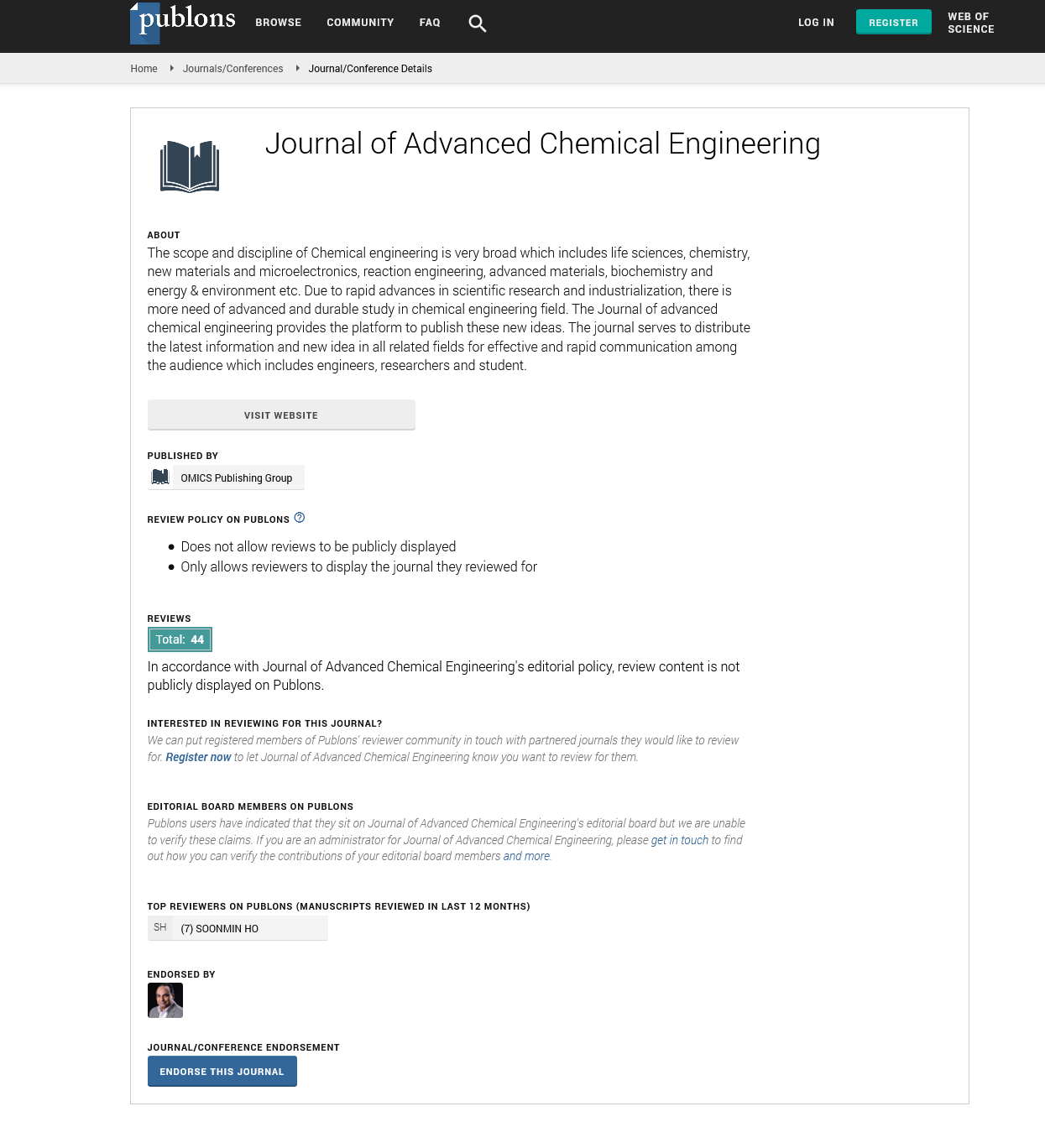Indexed In
- Open J Gate
- Genamics JournalSeek
- Smithers Rapra
- RefSeek
- Directory of Research Journal Indexing (DRJI)
- Hamdard University
- EBSCO A-Z
- OCLC- WorldCat
- Scholarsteer
- Publons
- Geneva Foundation for Medical Education and Research
- Google Scholar
Useful Links
Share This Page
Journal Flyer

Open Access Journals
- Agri and Aquaculture
- Biochemistry
- Bioinformatics & Systems Biology
- Business & Management
- Chemistry
- Clinical Sciences
- Engineering
- Food & Nutrition
- General Science
- Genetics & Molecular Biology
- Immunology & Microbiology
- Medical Sciences
- Neuroscience & Psychology
- Nursing & Health Care
- Pharmaceutical Sciences
Opinion Article - (2025) Volume 15, Issue 2
Carbon Capture Technologies and Their Role in Combating Climate Change
Michael Anders*Received: 30-May-2025, Manuscript No. ACE-25-29810; Editor assigned: 02-Jun-2025, Pre QC No. ACE-25-29810 (PQ); Reviewed: 16-Jun-2025, QC No. ACE-25-29810; Revised: 23-Jun-2025, Manuscript No. ACE-25-29810 (R); Published: 30-Jun-2025, DOI: 10.35248/2090-4568.25.15.371
Description
Climate change remains one of the most urgent global challenges of the twenty-first century, with carbon dioxide emissions at the center of the crisis. Industrial processes, power generation, and transportation sectors release billions of tons of COâ?? annually, driving global warming and the associated consequences such as rising sea levels, extreme weather events, and biodiversity loss. Among the many proposed solutions, carbon capture technologies stand out as a promising pathway to mitigate greenhouse gas emissions while the world transitions toward renewable energy. Chemical engineering plays a pivotal role in advancing these technologies, designing systems that are efficient, scalable, and economically viable. The story of carbon capture is one of innovation, challenges, and potential, where science and engineering converge to shape a sustainable future.
Carbon capture refers to the process of separating carbon dioxide from industrial emissions or even directly from the atmosphere, followed by storage or utilization. The concept is not entirely new; in fact, early forms of gas separation have existed for decades in industries like natural gas processing. However, the urgency of climate change has pushed research and development in this area to new heights. Among the most studied methods are post-combustion capture, pre-combustion capture, and oxy-fuel combustion. Each approach offers unique advantages and challenges, and their applicability often depends on the specific industry or energy source being addressed.
Post-combustion capture involves removing COâ?? from flue gases after fossil fuels are burned. This method is attractive because it can be retrofitted onto existing power plants and industrial facilities. Chemical solvents such as amines are commonly used to absorb COâ?? from exhaust streams, after which the captured gas is separated and compressed for storage or reuse. While effective, the energy requirements for regenerating solvents remain a major drawback, spurring research into more efficient absorbents, solid sorbents, and membrane technologies. Innovations in this area are steadily improving the efficiency and lowering the cost of post-combustion systems.
Pre-combustion capture, on the other hand, involves removing carbon dioxide before fuel is burned. This is typically achieved through gasification, where coal, biomass, or natural gas is converted into a mixture of hydrogen and carbon monoxide, followed by a shift reaction that converts CO into additional hydrogen and COâ??. The COâ?? can then be separated, leaving a hydrogen-rich fuel that can be burned with minimal emissions. This approach is highly effective but requires significant infrastructure changes, making it more suitable for newly built facilities rather than retrofits. Nevertheless, the promise of producing clean hydrogen while capturing COâ?? makes pre-combustion technology a critical part of future energy systems.
Oxy-fuel combustion represents a third pathway, where fuels are burned in pure oxygen instead of air. This produces a flue gas that consists mainly of COâ?? and water vapor, making separation relatively straightforward. However, the production of pure oxygen is energy-intensive, and optimizing this step remains a key research challenge. Despite these hurdles, oxy-fuel systems are being explored in pilot projects around the world, offering another potential route to low-emission power generation.
Once captured, the question becomes what to do with the COâ??. Storage, often referred to as carbon sequestration, involves injecting compressed COâ?? into deep geological formations such as depleted oil and gas reservoirs or saline aquifers. This approach has been proven technically feasible, with several large-scale projects already in operation globally. Ensuring the long-term stability of stored carbon, however, requires careful monitoring and regulation to prevent leakage. Advances in geochemical modeling, seismic monitoring, and well-bore engineering are helping to build confidence in the safety and permanence of geological storage.
Citation: Anders M (2025). Carbon Capture Technologies and their Role in Combating Climate Change. Adv Chem Eng. 15:371.
Copyright: © 2025 Anders M. This is an open-access article distributed under the terms of the Creative Commons Attribution License, which permits unrestricted use, distribution, and reproduction in any medium, provided the original author and source are credited.

